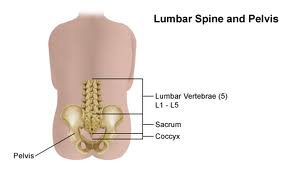Acute Low Back Pain is a condition of pain in the lower (lumbar-sacral) back region, with or without radiation of symptoms to the buttocks or lower extremities, of less than 6 weeks duration, in the non-pregnant patient.
Acute Low Back Pain: Initial Diagnosis and Management
- Elicitation of history and performance of physical examination. Special attention to presence or absence of “red flags” to include: age <18 or >55; history of malignancy, steroid use, or HIV positivity; weight loss or constitutional symptoms; structural deformity; anal or urethral sphincter disturbance; saddle anesthesia; gait disturbance; or widespread neurologic deficit.
- If red flags are present, diagnostic testing may include plain radiographs; CBC; ESR; bone scan; CT scan and/or MRI scan and electrodiagnosis as indicated.
- If red flags are absent a diagnostic workup is generally not necessary.
- Initial treatment for the first 2 weeks consists of: reassurance that most episodes resolve uneventfully within 6 weeks; encouragement to maintain as close to normal activity as is tolerable; avoidance of bed rest greater than 24 hours; NSAIDS (unless contraindicated); muscle relaxants for up to one week; acetaminophen as needed; weak opiates (codeine; propoxyphene) unless contraindicated; passive modalities (e.g. ice, heat) for symptomatic relief.
Acute Low Back Pain: Ongoing Management and Objectives
If acute low back pain has not improved in 2 weeks: re-evaluate for “red flags”, change NSAID, and refer to Physical Therapy for evaluation and treatment while continuing to follow patient.
Acute Low Back Pain: Indications for Specialty Care Referral
- Focal neurologic signs with abnormal imaging studies (urgent consult if worsening) – Orthopedics Spine referral. MRI prior to referral (without contrast unless tumor suspected).
- Focal neurologic signs with normal imaging studies (urgent if worsening) – Physical medicine and rehabilitation referral.
- Incapacitating radiculopathy unresponsive to therapy – Orthopedic Spine referral. MRI of lumbar spine prior to referral (without contrast usually).
- Abnormal plain radiographs associated with red flags – Orthopedics Spine referral. MRI of lumbar spine prior to referral (without contrast usually).
- Loss of bladder or bowel control – (urgent) Orthopedic Spine referral.
- If pain has not improved within 6 weeks, refer to Physical Medicine and Rehabilitation for evaluation and management.
Specialty Care Referral (Physical Therapy)
- No improvement after 7-10 days of initial primary care management.
- If the patient has radicular symptoms.
Specialty Care Referral (Orthopedic Spine referral)
- If the patient has neurological findings (motor, sensory, or reflex deficits) and/or has positive MRI findings.
Criteria for Return to Primary Care
- Resolution of symptoms or implementation of continuing treatment program that can be managed in primary care portal with periodic subspecialty follow-up.
- Chronic conditions with a stable neurologic exam in patients that have been evaluated by Orthopedics Spine physician are not surgical candidates.
You may feel a variety of symptoms if you’ve hurt your back. You may have a tingling or burning sensation, a dull achy feeling, or sharp pain. Depending on the cause and severity, you also may have weakness in your legs or feet.
Acute low back pain is most often caused by a sudden injury to the muscles and ligaments supporting the back. The pain may be caused by muscle spasms or a strain or tear in the muscles and ligaments.

